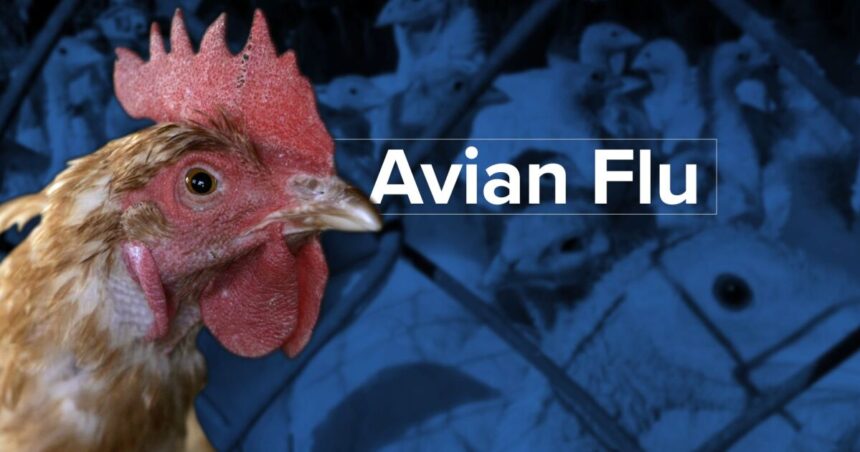GREAT FALLS — Across the nation, poultry farmers are grappling with the effects of Highly Pathogenic Avian Influenza or HPAI.
“We are two years into a national outbreak with highly pathogenic avian influenza,” explained Dr. Tahnee Szymanski, Montana State Veterinarian.
Dr. Szymanski told MTN there have been approximately two dozen HPAI detection’s across the state of Montana, which equates to about 175,000 birds impacted.
It sounds like a large number, but is small compared to infections in flocks across the nation.
At the beginning of April, the Centers for Disease Control and Prevention released a public health alert informing that a Texas farm worker tested positive for HPAI. Before that announcement, Cal-Maine Foods, the largest producer of shell eggs in the country announced it would cull 1.6 million laying hens and nearly 350,000 young hens. It amounts to almost 4% of its total flock.
Animal and Range Science Extension Specialist at Montana State University Thomas Bass says the concern is lower in Montana.
“I think that we can be a little less vulnerable compared to the Midwest where there’s a pretty concentrated egg and turkey production. Meaning a lot of farms on the landscape essentially near each other.” Bass explained.
Montana’s vast open spaces create less vulnerability to livestock, but doesn’t eliminate the threat. Livestock can become infected when in close proximity to an infected bird or a human.
Bass explained some pathogens will live in humans lungs and can be transmitted elsewhere. He did not confirm that is the case for HPAI. If an animal or group of livestock become infected, Dr. Szymanski says that farmers and ranchers would be asked to distance themselves from others, eliminate sharing of equipment and tools, and limit the number of visitors on your property until the illness passes.
With “Bird Flu” still on the minds of agriculture producers and a large number of bird culls in the U.S. — When and will a vaccination become available?
“On that large scale of domestic poultry, we have not made that decision. I know that now that we have the detection in cattle, that conversation, I think, is very much being revisited. Is is it time for us to to look and go that route,” said Dr. Szymanski.
Bass and Szymanski both explained a vaccination would come in the form of dry food for poultry flocks. Bass says it would be difficult to inject individual flocks as some can vary in size. With illness spreading between species and humans, the conversation of a vaccination is becoming more relevant.
“I believe the vaccine is being very seriously discussed at the highest levels of of policy around that meeting between the USDA and APHIS.” Bass added.
The egg crisis of 2022 leaves questions on if the price per dozen of eggs will rise with HPAI running rampant in the United States.
Marketplace.org reports in 2023, the price per a dozen grad A eggs peaked at more than $4.80 after the bird flu infected tens of millions of hens, data from the Bureau of Labor Statistics’ consumer price index shows it’s more than twice the amount they cost during the same period the previous year.
In the same report, the University of Arkansas wrote a paper finding other factors driving up egg prices during the 2022 outbreak, like inflation. The report found avian flu resulted in a 7.2% to 9.2% increase in retail egg prices from February 2022 and June 2023.
Associate Professor Lee Schultz in the Economics department at Iowa State University told Marketplace, “Typically, 86-87.5% of the eggs produced within a month are consumed, and 12.5-14% of the eggs are hatched to add birds to the flock.. For a short period of time, the industry could maintain supplies to consumers by retaining fewer eggs.”
As the avian flu continues a steady pace across the country, Dr. Szymanski says poultry and dairy products in grocery stores are safe and there should be no fear during consumption.





